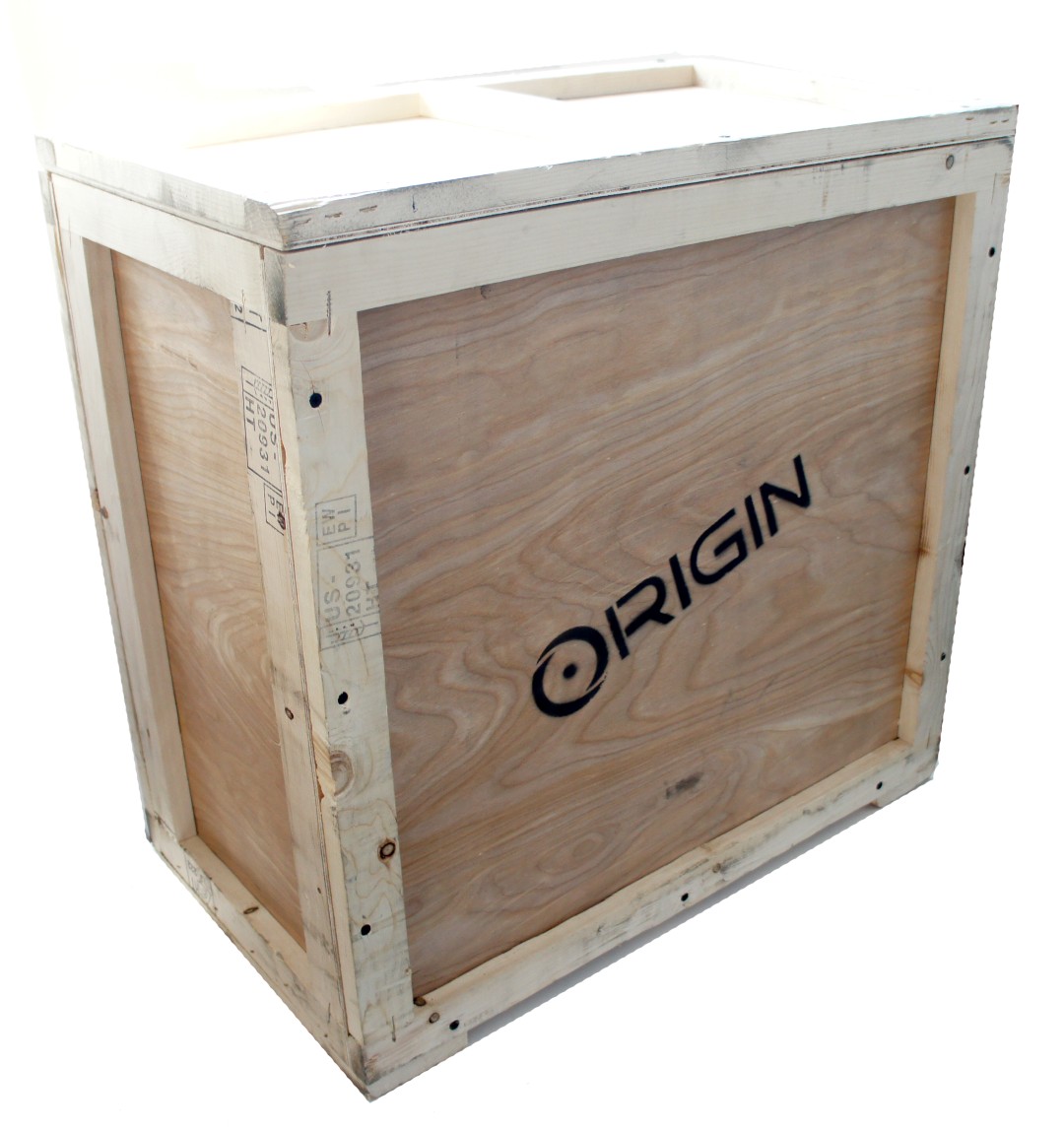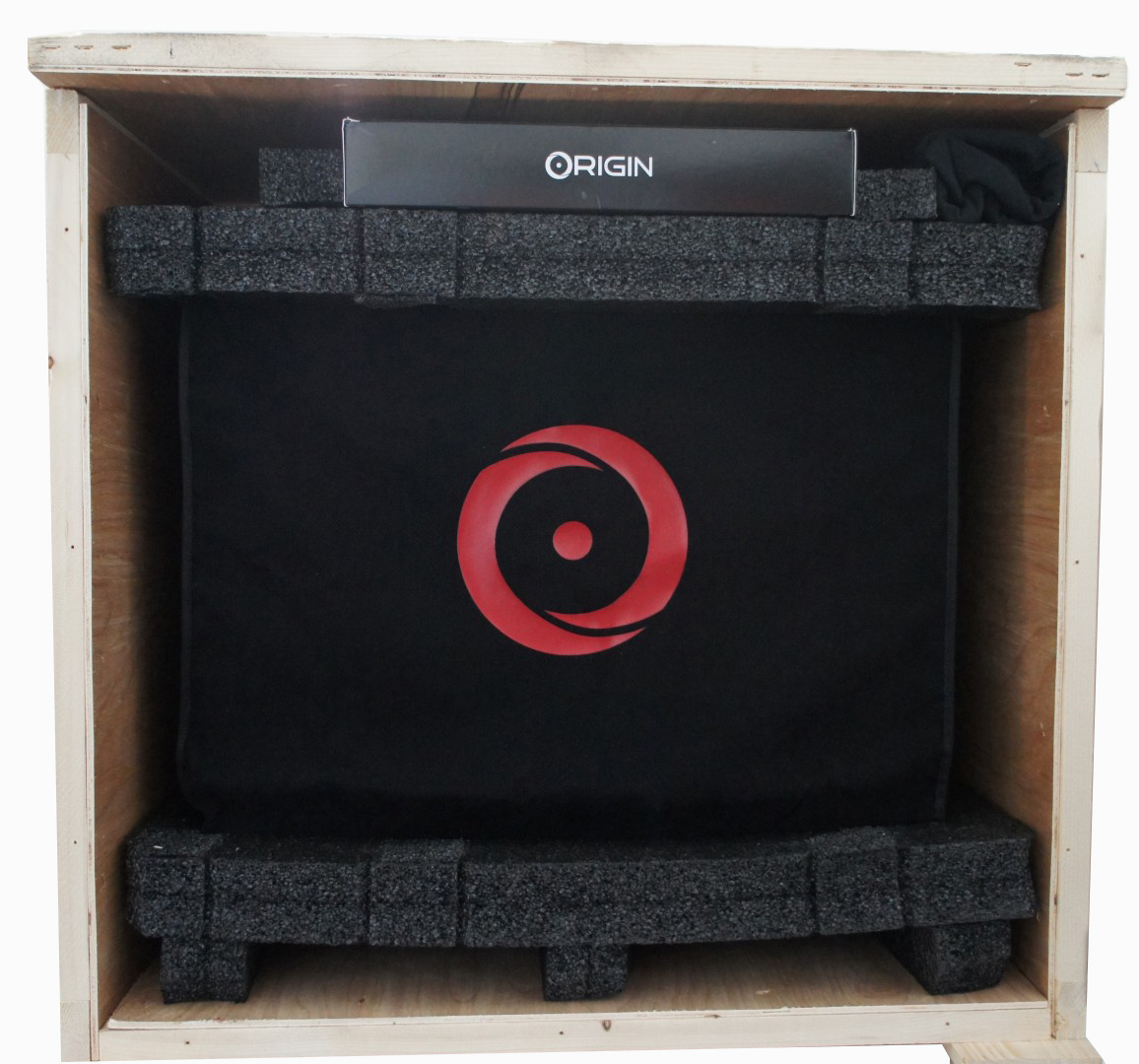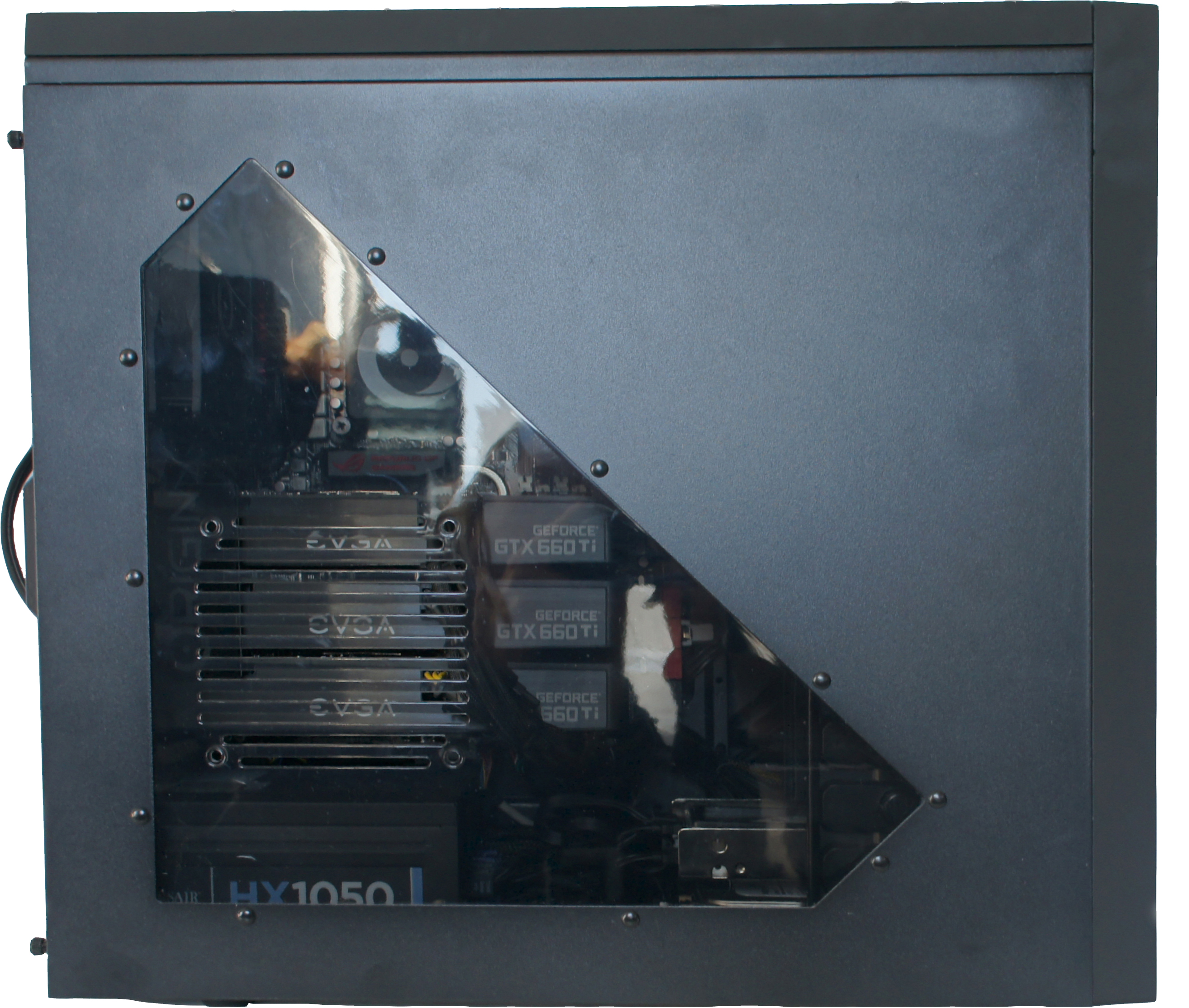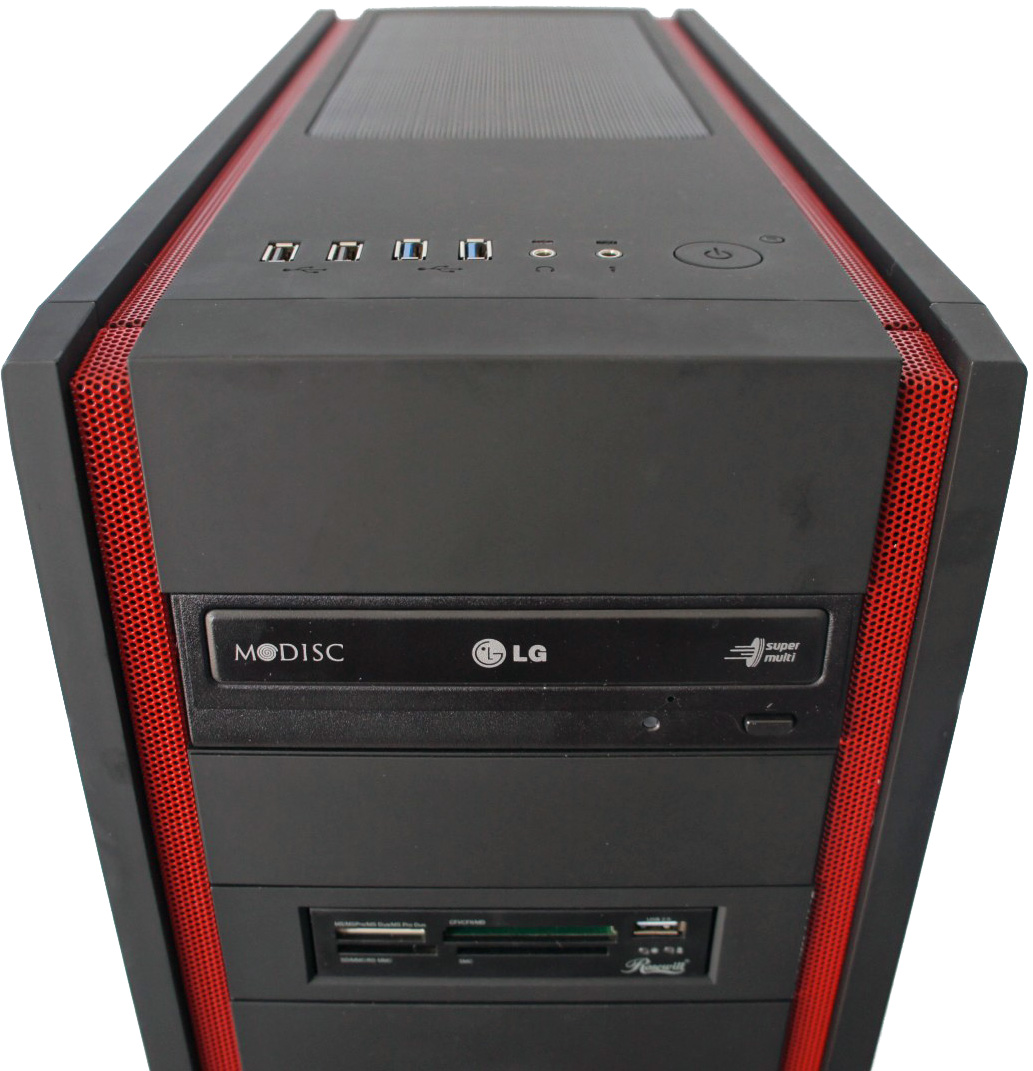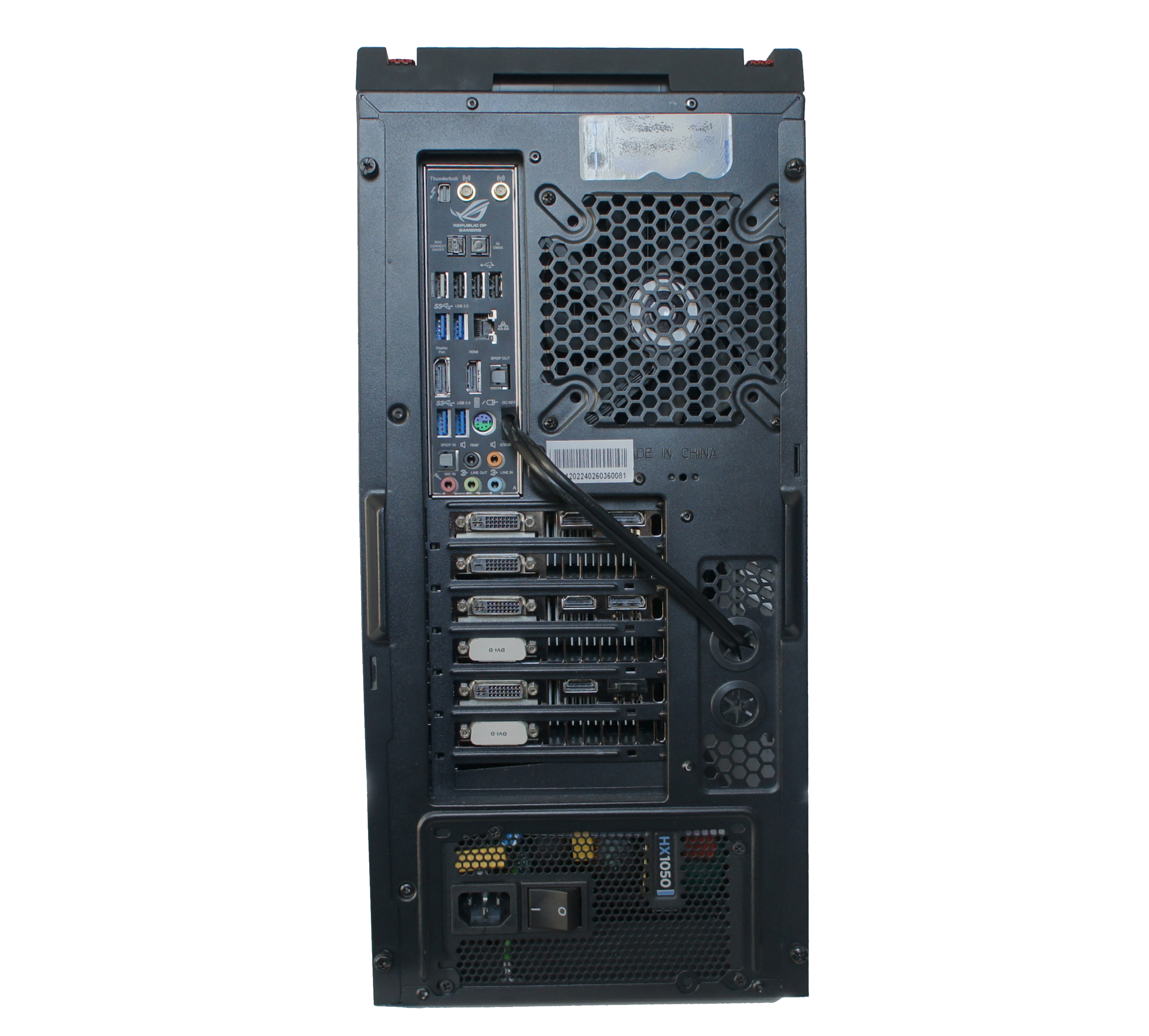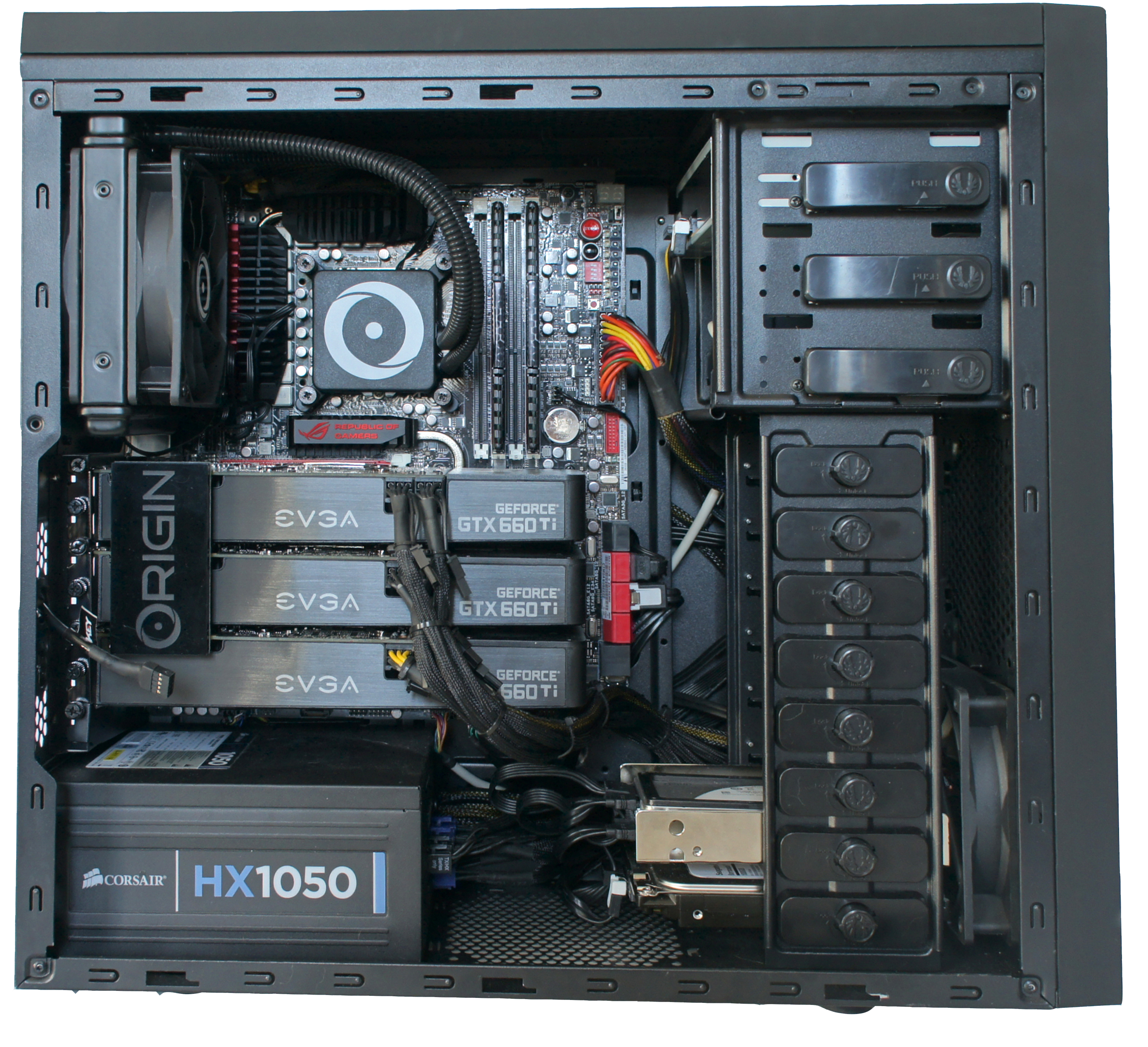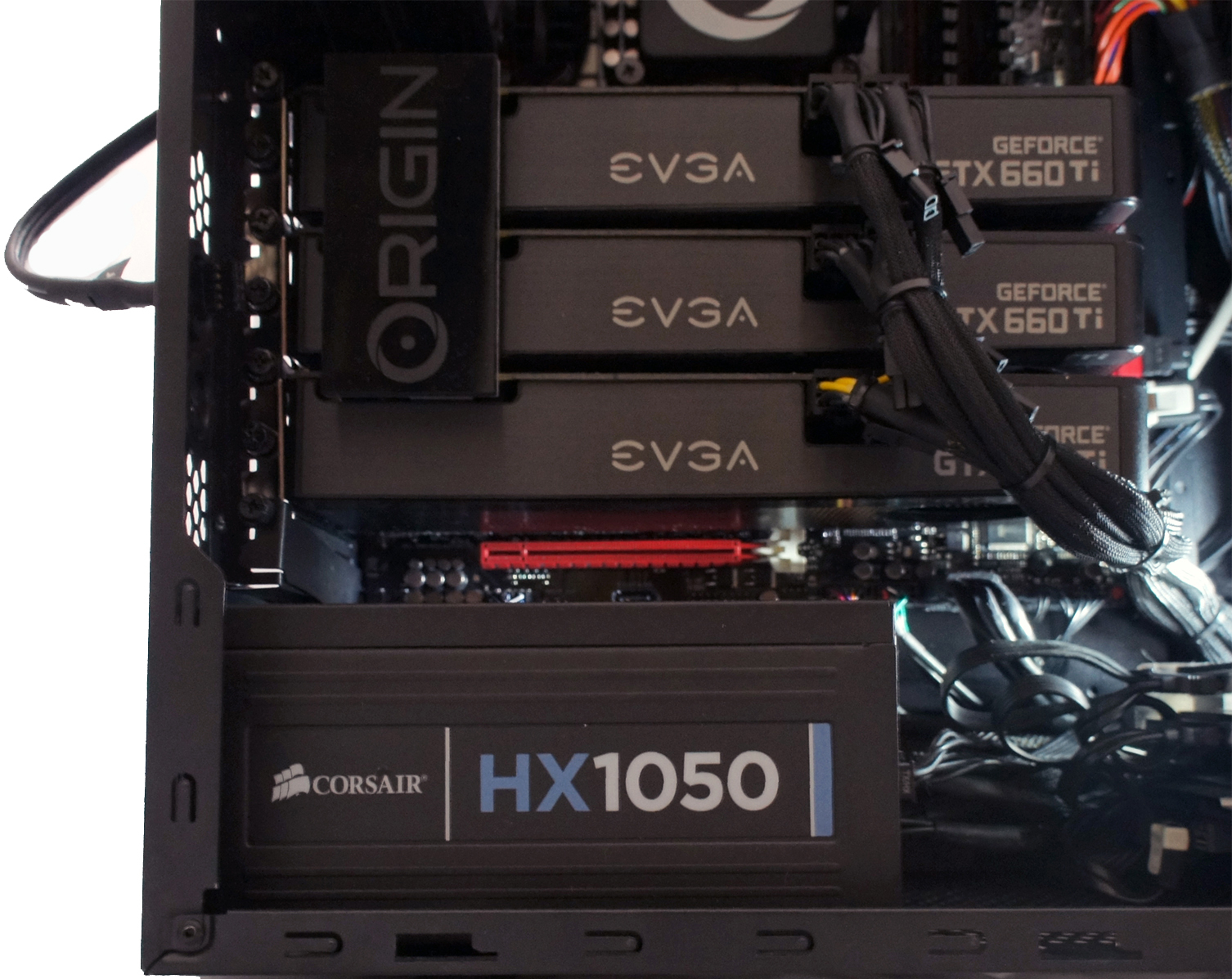Origin PC Millennium: 3-Way SLI And A 4.6 GHz Core i5
After a long hiatus, Tom's Hardware returns to consumer desktop reviews with Origin PC's Millennium. Can three GeForce GTX 660 Ti cards and an overclocked Core i5 handle gaming at 5760x1080? We want to know if this elegant box is worth its $3,000+ price.
Origin Millennium: Inside And Out
| Origin PC Millennium | |
|---|---|
| Processor | Intel Core i5-3570K (Ivy Bridge), 4C/4T, 3.4 GHz Base Clock Rate, 3.8 GHz Maximum Turbo Boost, LGA 1155 @ 4.6 GHz |
| Motherboard | Asus Maximus V Extreme, Z77 Extreme Chipset |
| Memory | 8 GB Corsair Vengeance DDR3-1600 (4 GB x 2) |
| Graphics | 3 x Nvidia GeForce GTX 660 Ti in SLI (2 GB, DDR5) |
| Storage (Boot) | 2 x 120 GB Intel SSD 520 in RAID 0 |
| Storage | 1 TB SATA 6 Gb/s Hard Drive, 7,200 RPM, 32 MB Cache |
| Cooling | Origin Frostbyte 120 Sealed Liquid Cooling Systems (w/ 1 Fan) |
| Power Supply | 1,050 W Corsair HX1050 |
| Chassis | BitFenix Shinobi (Black/Red) |
| Optical Drive | LG 24x CD/DVD burner |
| Card Reader | Rosewill 40-in-1 Media Card Reader |
| Operating System | Windows 7 Home Premium (64-Bit) |
| Warranty & Support | One-year parts replacement and 45-day free shipping warranty with DVD image, Lifetime 24/7 technical support |
| Price as Configured | $3,073 |
When it comes to ordering from Origin PC's configurator page, you're able to customize the Millennium with any number of components (including four other case options). This system’s starting price is a relatively modest $1,225. For that, you get a Core i3-2120 CPU, an AMD Radeon HD 7750 graphics card, and a 500 GB hard drive. Although you certainly can game on a system like that, our review unit configuration packs a solid choice of components for those seeking more power for multi-screen gaming, all without going off the deep end with Extreme Edition processors and dual-GPU graphics cards.
Before we get into examining the Millennium itself, let's take a minute to discuss Origin's packaging. After all, it’s not easy to ship a system of this size with multiple bulky graphics cards and have it arrive in one working piece. The company smartly ships the Millennium in a wooden crate, with foam inserts above and below the system, and a nice cloth bag covering the case. Inside the system, it also places foam pieces to protect the graphics cards. It's apparent that Origin takes care in getting shipping right. And the unboxing experience makes you feel like you’re getting a premium product as well.
With all that said, the first Millennium system we received, while not appearing damaged in any way, failed to recognize one of the three graphics cards. After going through some diagnostics with Origin’s well-informed and patient support staff, we eventually had to send the system back. The second system arrived with no issues whatsoever in the exact same packaging, so we’re inclined to give Origin the benefit of the doubt and call the issue with our first unit a fluke.
Now, let’s take a look at the system itself. It may not be as flashy as some might prefer, but the Millennium’s Shinobi case has a distinctive look and feel. Red mesh trim running along both sides of the top and front add some flair without being gaudy. And Origin cut its own logo in the front, right where the Bitfenix logo would sit on the stock version of the case.
A partial side window means you can easily see inside the case, and while our review unit lacks interior lighting, you can add it when configuring the system for an extra $20. Those who like easily accessible USB ports (and really, who doesn’t?) will appreciate that there are four at the front of the top panel on the Shinobi case, two of which are USB 3.0-capable as well. Headphone/mic jacks and the power/reset buttons are located here as well.
Occupying the sole external 3.5” drive bay on the front of the system sits a Rosewill multi-format card reader that should handle pretty much every kind of card you’re likely to have lying around. The reader also contains a single USB 2.0 port. While functional, the card reader doesn’t look all that great with its exposed slots and ports. We’d prefer it if we were able to hide the reader behind a drop-down door for a cleaner look when it isn’t being utilized.
Ports on the rear I/O panel of Asus' Maximus V Extreme motherboard should please most users. There are four more blue USB 3.0 ports, four more USB 2.0 connectors, digital and analog audio in and out, PS/2 connectivity, and even a Thunderbolt port. You get connectors for the included Wi-Fi antennas and a gigabit Ethernet jack; the motherboard supports Bluetooth as well.
Get Tom's Hardware's best news and in-depth reviews, straight to your inbox.
Then there is the trio of graphics cards, each equipped with HDMI output, DisplayPort, and pair of DVI ports. Naturally, connecting multiple screens is definitely not a problem.
That cable sticking out of the back is the connector for Asus' OCKey dongle. We stuck it in a water-cooling grommet to keep it out of the way.
Removing the partially-windowed left panel reveals that Origin spent some time on cable management. Despite the relatively modest amount of interior space and three graphics cards (totaling 12 six-pin power connectors), the company manages to keep things pretty clean. Given the cooling issues involved with three graphics cards and a heavily overclocked processor, the Millennium's tidy interior is both attractive and functional.
As for future upgrade options, our review unit has space for two additional RAM modules, though the included 8 GB is certainly more than enough for gaming (and most other computing tasks). Five SATA ports are also free, despite the two SSDs, 1 TB hard drive, and DVD optical drive. Six empty hard drive bays are more than enough to utilize all of those available SATA ports, if you want more storage.
Space for add-in cards is limited, since the three graphics cards occupy all but the last PCI Express x16 slot and the stray SATA connector below it. If you plan on installing a storage, network, or multimedia controller in the future, we'd suggest configuring this machine to deliver your desired amount of graphics horsepower using two cards, rather than three.
Current page: Origin Millennium: Inside And Out
Prev Page Mid-Tower Might From Origin PC Next Page CyberPower Baseline System And BenchmarksAfter a rough start with the Mattel Aquarius as a child, Matt built his first PC in the late 1990s and ventured into mild PC modding in the early 2000s. He’s spent the last 15 years covering emerging technology for Smithsonian, Popular Science, and Consumer Reports, while testing components and PCs for Computer Shopper, PCMag and Digital Trends.
-
DarkSable So... no mention of the fact that you're paying for a lot of things you don't need? In it's head-to-head against the DIY rig, I'm noticing a LOT of parts that I wouldn't even consider spending extra money on.Reply
And they're getting those parts at a discount, so you're paying a lot of money for that tech line. -
EzioAs "This system’s starting price is a relatively modest $1,225. For that, you get a Core i3-2120 CPU, an AMD Radeon HD 7750 graphics card, and a 500 GB hard drive."Reply
Wow, talk about rip off... -
DarkSable Reply9539987 said:"This system’s starting price is a relatively modest $1,225. For that, you get a Core i3-2120 CPU, an AMD Radeon HD 7750 graphics card, and a 500 GB hard drive."
Wow, talk about rip off...
Haha, yeah. That's about what I spent for an i5-3570k and GTX 670. I'll stick with my hand-builts and NOT pay $700 for a tech support who reads from a script. -
mayankleoboy1 For this much price, i would add another $100 and get the i7-3770k. Those extra 4 cores will come in handy in apps.Reply
And probably get 2xHD7950. 2 card setups are easier to maintain than 3 card setups (drivers). And the compute capability of GCN is already legendry. -
Caspase mayankleoboy1For this much price, i would add another $100 and get the i7-3770k. Those extra 4 cores will come in handy in apps.And probably get 2xHD7950. 2 card setups are easier to maintain than 3 card setups (drivers). And the compute capability of GCN is already legendry.Reply
Those extra 4 threads. And I bet at stock it would lose.
Why aren't temperatures shown? I was curious to see how an ivy @ 4.6 in a mid tower with 3 GPUs with modest cooling would fair...
